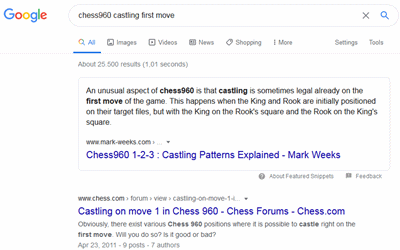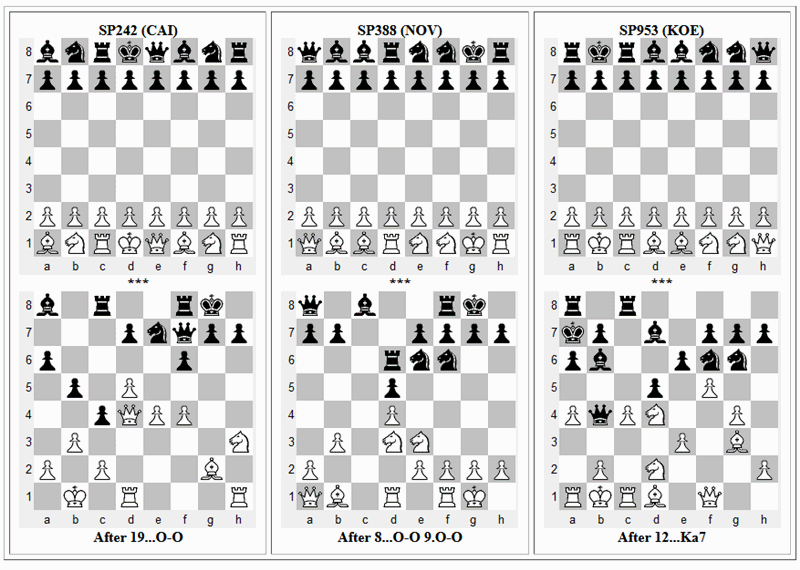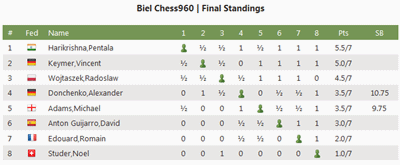SP242 (CAI): In this game, 1.O-O-O is possible on the first move, which is what White played. I don't often do this because I like to keep my choice of castling open for as long as possible. The second diagram shows that I eventually castled ...O-O. This is called 'castling into an attack', after which I got crushed. [...] A deeper look at castling on the first move might be a good angle.
Below is a screen capture of the results that Google returned.

Google search on 'chess960 castling first move'
That first text box is from my 'Chess960 1-2-3' page Chess960 Castling Patterns Explained. It says,
An unusual aspect of chess960 is that castling is sometimes legal already on the first move of the game. This happens when the King and Rook are initially positioned on their target files, but with the King on the Rook's square and the Rook on the King's square.
In fact, that particular 'Chess960 1-2-3' page is the *only* '1-2-3' page, a project I started in 2014, then abandoned because I couldn't get a grip on it. Maybe I should give it another shot.
After that statement of fact -- 'castling is sometimes legal already on the first move' -- more interesting are the consequences of first move castling. The second link in my screen capture leads to Castling on move 1 in Chess960 (chess.com; April 2011). The questions posed there are:-
There exist various Chess960 positions where it is possible to castle right on the first move. Will you do so? Is it good or bad? Is it a waste of tempo or will it help you protect the King and make your position good.
Some of the comments are worth repeating. My own remarks are after the separators ('•'):-
'In this position [SP439 RNBNQKRB], I wouldn't castle because after castling, a first few moves need to be done to have some kind of protection near the King. thus it's a waste of tempo.' • Instead of 'a waste of tempo', more accurate might be a 'a misuse of tempo'. The move accomplishes something, but other moves might accomplish more.
'You're essentially conceding your opponent first move, and removing your own ability to castle. The opponent will now know exactly where to aim his forces. Always a bad idea.'
'I would do it for style.' • I've seen this stated elsewhere as: 'Castling on the first move is cool! I do it every chance I get.'
'There should be no situation where castling would be the best first move, because there is no situation where this couldn't be done on the second move, regardless of what Black does.' • A good point that I've never considered. Why use the first serve to deliver a lob?
'I think a Pawn move staking out the center should be preferred to castling. Having said that, White can probably get by with castling on the first move. But if White does not start by castling, Black should definitely not do so as this would put him two tempi behind in staking out a claim in the center.' • Another good point.
So the reasons for not castling outweigh the single reason in favor of it ('It's cool!'). The question 'Where will I castle?' is one of the main considerations in evaluating any chess960 start position and in choosing a first move. Many of the previous posts on this blog, all of them in the category 'Posts with label Castling', deal with first move castling. It might be useful to identify them.
[For another example of me struggling with my own public thoughts, see A Quotable Quote (July 2019). For more on snippets, see How Google’s featured snippets work (support.google.com).]


